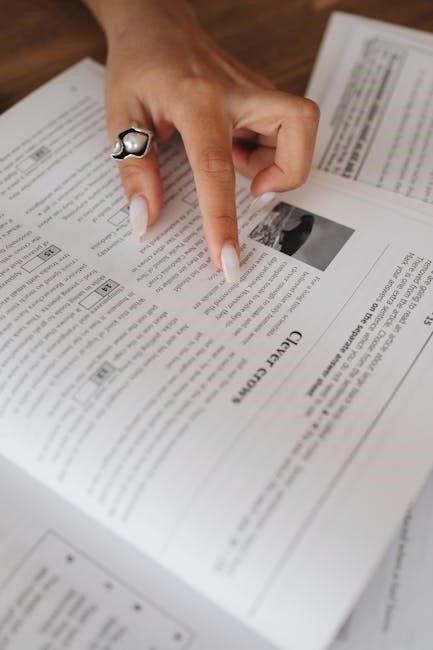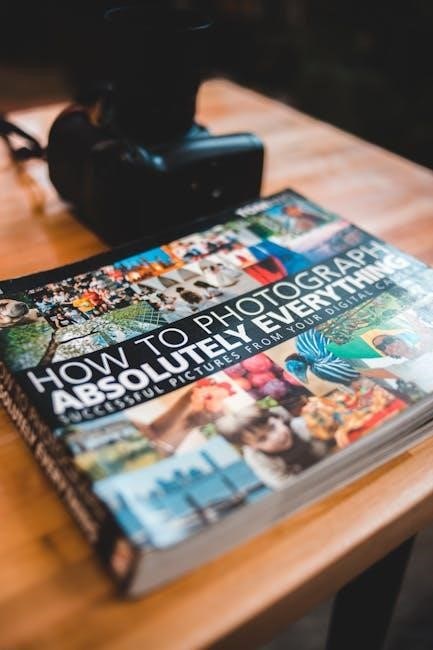To create a study guide, start by understanding its importance, using
relevant resources
and organizing information in a clear and concise manner, making it easier to study and retain information effectively always.
Understanding the Importance of a Study Guide
A study guide is a valuable tool that can help individuals prepare for exams and tests, by providing a clear and concise overview of the material that needs to be studied. According to various online resources, creating a study guide can be a straightforward process that involves gathering relevant information and organizing it in a logical and coherent manner. The importance of a study guide lies in its ability to help individuals focus their studying efforts, identify key concepts and ideas, and retain information more effectively. By using a study guide, individuals can also develop better study habits and improve their overall academic performance. Additionally, a study guide can be tailored to meet the specific needs and learning style of the individual, making it a highly effective and personalized study tool. Overall, understanding the importance of a study guide is crucial for anyone looking to improve their academic performance and achieve their educational goals.

Step 1: Gathering Materials for the Study Guide
Gather necessary materials, including notes and textbooks, to create a comprehensive study guide using online resources and tools effectively always.
Organizing the Necessary Tools and Information
To effectively organize the necessary tools and information for a study guide, it is essential to have a clear plan in place. This involves categorizing notes, textbooks, and other resources into relevant sections, making it easier to access and review the material. Using a binder or digital tool to store and organize the information can also be helpful. Additionally, creating an outline or table of contents can provide a visual representation of the study guide’s structure, allowing for quick navigation and reference. By taking the time to organize the necessary tools and information, individuals can create a comprehensive and user-friendly study guide that meets their needs and helps them achieve their academic goals. With a well-organized study guide, students can focus on learning and retaining the information, rather than wasting time searching for it. This can lead to improved academic performance and increased confidence.

Step 2: Determining Objectives for the Study Guide
Determining clear objectives is crucial for creating a study guide, using
- specific goals
to focus efforts and maximize learning outcomes always effectively.
Pinpointing the Key Elements to Focus On
To create a study guide, it is essential to pinpoint the key elements to focus on, using relevant resources and information to determine the most critical areas of study.
This involves analyzing the subject matter and identifying the main concepts and ideas that need to be covered.
By doing so, individuals can create a study guide that is tailored to their specific needs and learning objectives, making it easier to stay focused and motivated. Additionally, incorporating
paragraphs
and
headings
can help to break up the content and make it easier to read and understand.
Overall, pinpointing the key elements to focus on is a crucial step in creating a study guide that is effective and efficient.
By taking the time to carefully plan and organize the content, individuals can create a study guide that helps them achieve their learning goals.
This can be achieved by using a variety of techniques and tools, including online resources and study aids.
The key is to find a approach that works best for the individual and to stay committed to the learning process.
With persistence and dedication, anyone can create a study guide that helps them succeed.

Step 3: Formatting the Study Guide Based on Learning Style
Using visual aids and color-coded sections to format the study guide effectively always.
Using Visual Aids or Repetition to Enhance Understanding
Utilizing visual aids such as diagrams, charts, and graphs can significantly enhance understanding and retention of information. By incorporating these elements into a study guide, individuals can better comprehend complex concepts and relationships. The use of color-coded sections and font styles can also help to differentiate between various types of information and make the study guide more engaging. Additionally, repetition is a powerful tool for reinforcing knowledge and can be incorporated through the use of flashcards or summary lists. By combining visual aids and repetition, a study guide can become a highly effective tool for learning and retention. Overall, the strategic use of visual aids and repetition can greatly enhance the effectiveness of a study guide and improve overall understanding of the material. This approach can be tailored to individual learning styles, making it a versatile and valuable technique for creating a study guide.

Step 4: Creating a Sample Test or Quiz
Creating a sample test or quiz helps reinforce knowledge and identifies areas needing improvement always with effective learning strategies and techniques online easily.
Practicing with a Mock Exam to Reinforce Knowledge
Practicing with a mock exam is an essential step in reinforcing knowledge and identifying areas that need improvement. By using a sample test or quiz, individuals can assess their understanding of the material and make necessary adjustments to their study guide. This process helps to build confidence and familiarity with the exam format, reducing anxiety and stress on the actual test day. Effective learning strategies and techniques can be applied to the mock exam, allowing individuals to refine their approach and optimize their results. The internet provides a wealth of resources and information on creating mock exams and quizzes, making it easier to practice and reinforce knowledge. With a well-structured study guide and regular practice, individuals can achieve their academic goals and develop a deeper understanding of the subject matter. Regular review and practice are key to retaining information and performing well on exams.